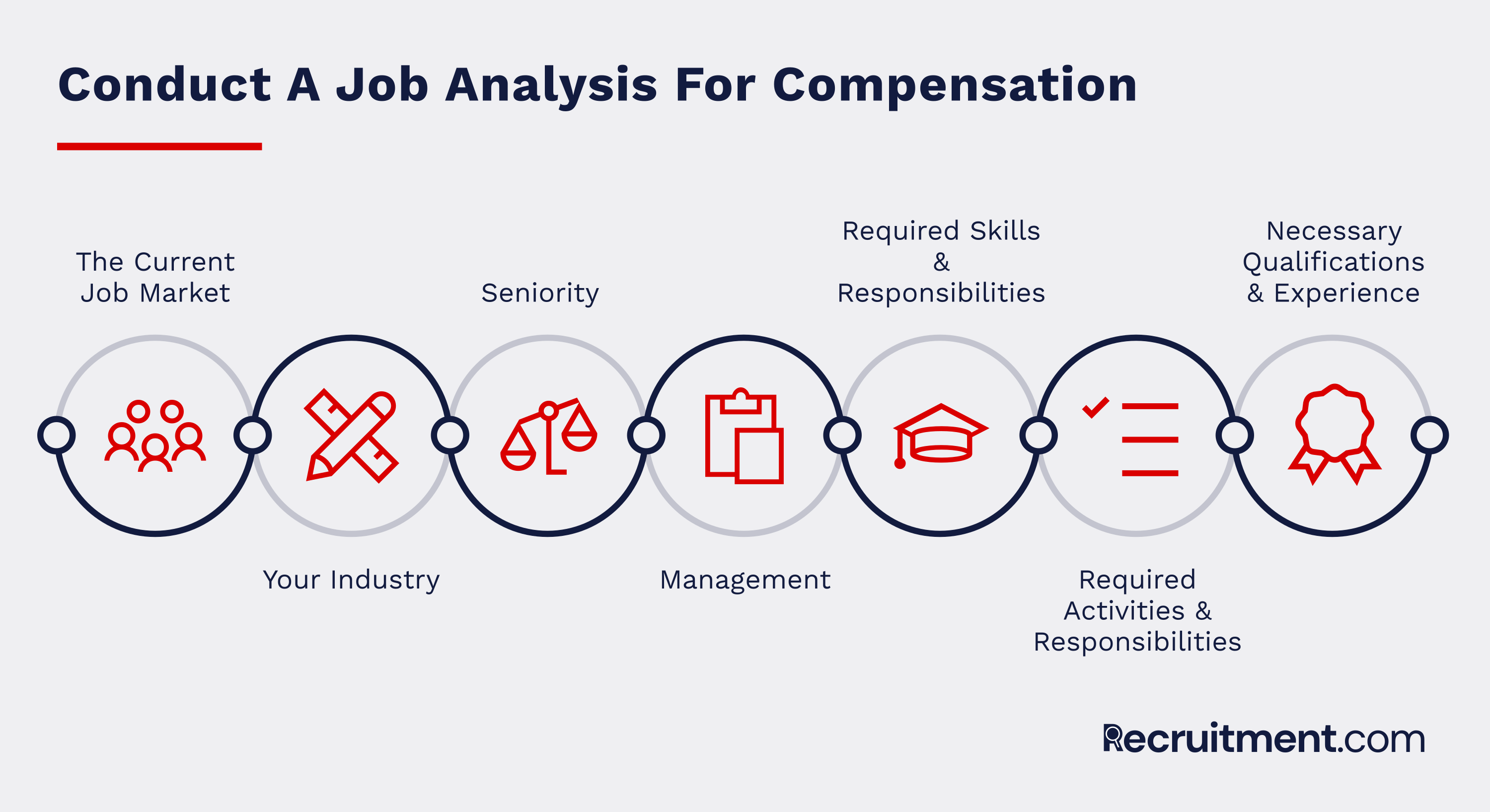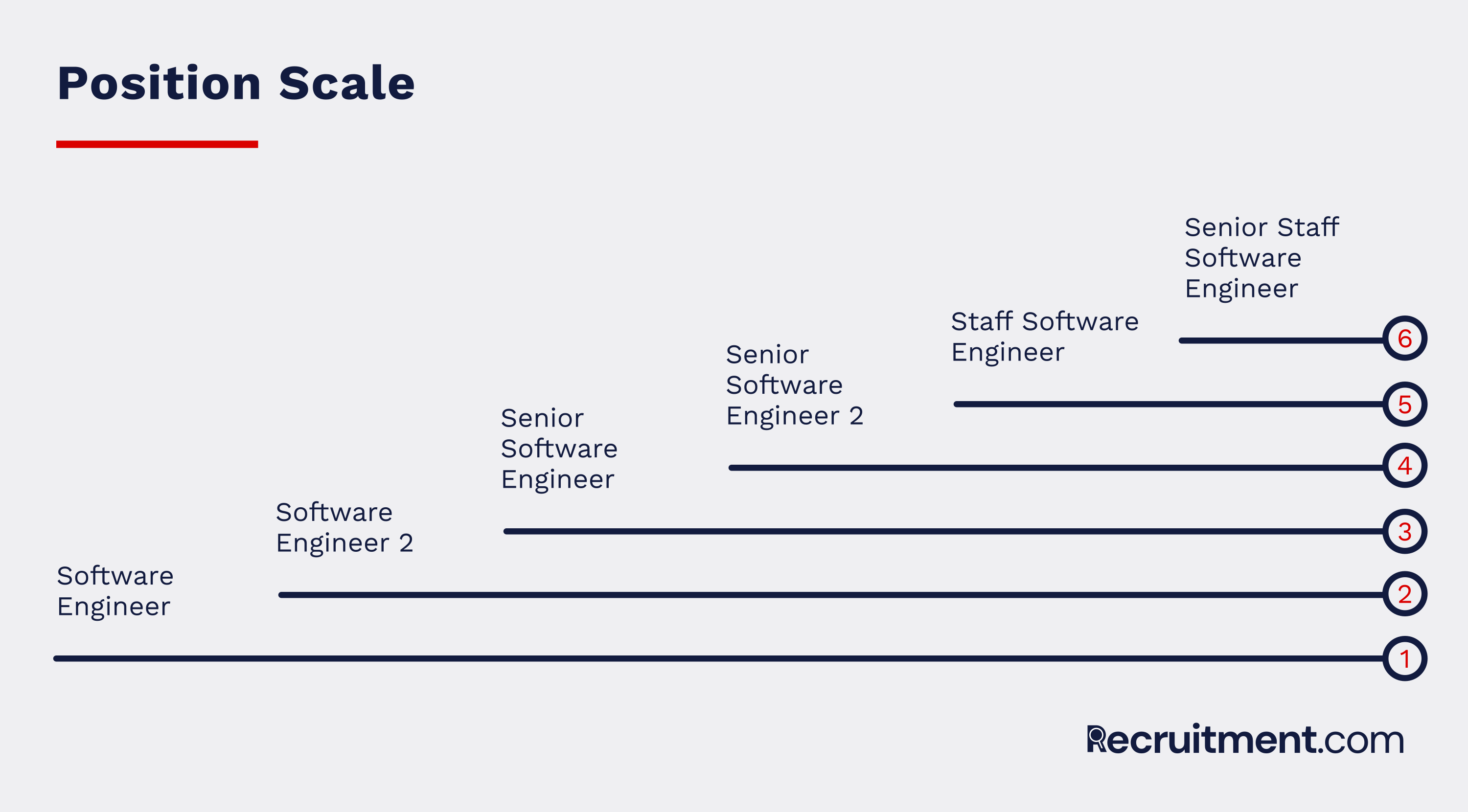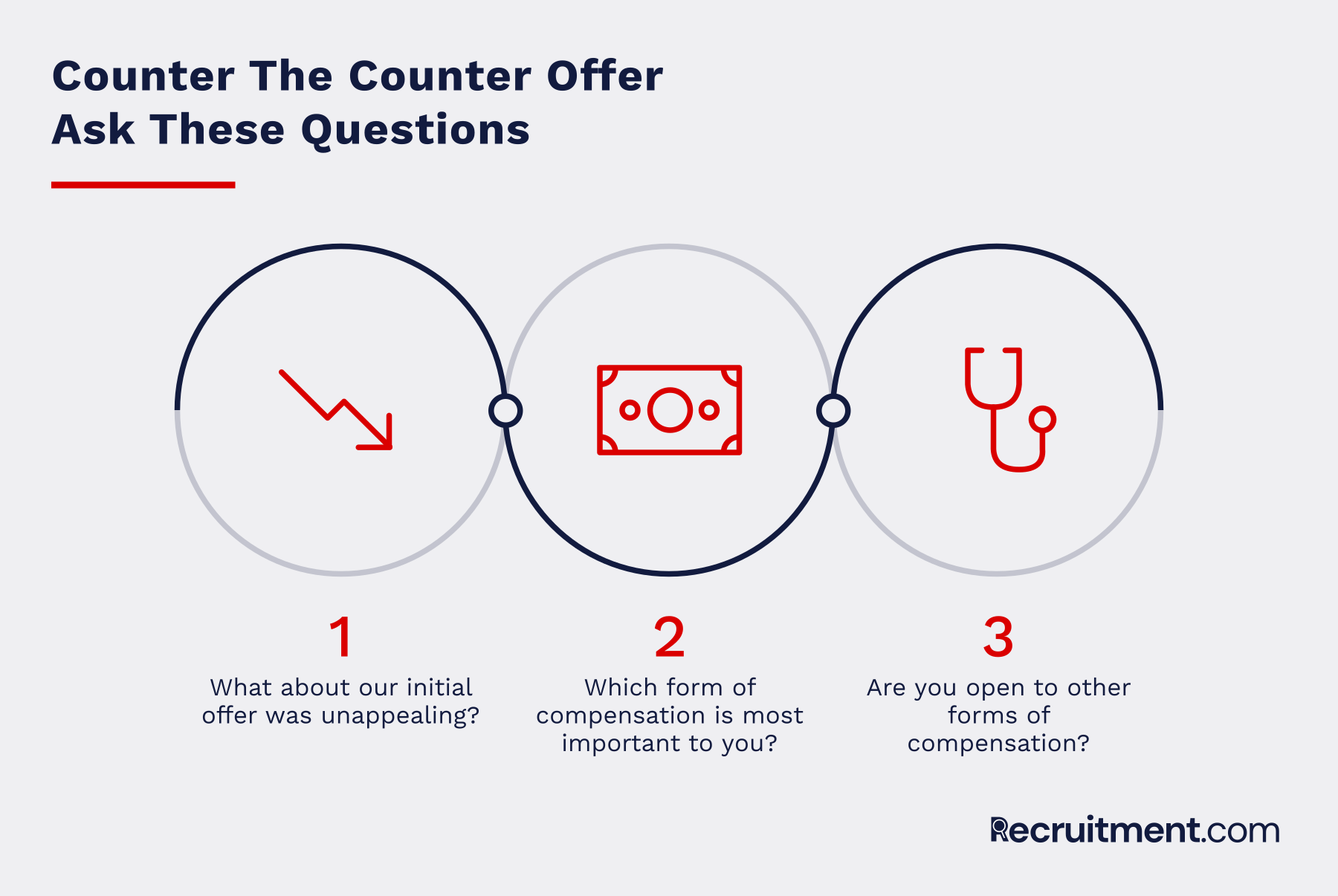How To Negotiate Salary With A Candidate

Andrew McDermott is a business book author and writer whose work has been featured in Entrepreneur magazine and Fox Business.
Candidates have more power than ever before with compensation, and they know it. This shift in power means employers are struggling to fill positions in their organizations.
Salary is typically the final piece in the interview process, but it is also the most important. A Glassdoor report lists salary and compensation as one of the five most important considerations candidates take into account.
Candidates today are more vocal about what they want. According to a 2018 Jobvite survey, 75 percent of recruiters have noticed an increase in salary negotiations from job candidates. This trend is driven by a booming economy, an unemployment rate under four percent, and an abundance of employment opportunities.
A survey from staffing firm Robert Half found 55 percent of workers, up from 39 percent in 2018, attempted to negotiate salary during their previous job offer. Seasoned recruiters expect candidates to haggle during the selection process.
What Organizations Need To Negotiate Successfully
Salary is often the last item to be discussed in the interview process, but it is dependent on the details and discussions that come before it. These preliminary details have a significant impact on your organization's ability to attract, hire, and retain top talent.
- Employer brand strength: According to Glassdoor, 69 percent of candidates would refuse a job with a company that had a bad reputation, even if they were unemployed. Unsurprisingly, 84 percent would consider leaving their current jobs if they were offered a position with a company that had a better reputation.
- Employee ratings and reviews: Job candidates read four to seven reviews before forming an opinion of a company; 78 percent say ratings and reviews from company insiders are influential when deciding where to work. Ninety-five percent suspect censorship and faked reviews if they don't see negative scores or reviews.
- Candidate considerations: Job candidates are most concerned with salary and compensation, growth opportunities, work-life balance, location/commute, and company culture and values.
These details have a significant impact on your ability to successfully negotiate starting salaries. For example, a candidate may prefer to work with Microsoft over an unknown company, even if they receive less money. From the candidate's perspective, this makes sense. Microsoft is a significant career stepping stone. Accepting a position there opens doors and creates opportunities in the future.
Individual recruiters and HR professionals may not have direct control over these details, but it is still an important consideration to discuss with company leadership. Improve these details ahead of time, and you improve your negotiating position with candidates.
How Tesla negotiates with candidates
Elon Musk uses a big, hairy, audacious goal to recruit employees to Tesla. He and his team sell candidates on the very real idea of changing the world for the better. All candidates have to do is bring their considerable talents to Tesla. Andre Rivera, production training manager at Tesla, shares a story outlining their approach.
"Wearing a blue Tesla cap, a white Tesla shirt, and jeans, Rivera, 47, tells a story about an early hire, a young man who was an impressive interview — until talk turned to his work background. "He sank into his seat. His energy was gone," Rivera recalled. "He said: 'OK, now you're going to ask me about my experience. But I don't have any with automobiles. I'm a server at the Olive Garden.'
Rivera knew where the kid was coming from; he was once in his 20s with no idea how to build a car in a modern factory — and he was later put in charge of an entire assembly line to launch new vehicles. Then Rivera asked him what he had to handle every day. He got exactly the response he wanted: dealing with different attitudes, multitasking, working on a clock, communicating, problem-solving.
"That's what I want you to do for me here," Rivera told him. "I can teach you how to build a car. I can teach you how to use a tool. But I need what you're bringing."
Tesla sells employees on their vision and lofty goals. Their brand strength attracts hungry, highly motivated candidates with the intense drive needed to achieve Musk's incredible vision. What about salary and compensation? How does Tesla compensate their employees?
While the median pay of Tesla employees is significantly higher than the US average, their median workers are paid less than Ford and GM, whose median employees made $64,316 and $77,849, respectively. In fact, the median Tesla employees make less than Alphabet ($246,804), and Facebook ($228,651) and a little more than Apple ($55,426).
So what is the median pay of Tesla employees? $56,163.
All of this goes to show that, while salary and compensation are important to candidates, other factors dictate and shape what top candidates are willing to accept from your company. So how do you negotiate salary and compensation with your ideal job candidates?
Successful Salary Negotiation Begins With A Framework
You've found your ideal candidate, and you've made an offer. Depending on your candidate's response, you'll face one of three scenarios.
- Your candidate accepts your offer. You finalize important details and mark the position as filled. You provide candidates with the appropriate details and information needed to move forward.
- Your candidate declines your offer. You have several options depending on your temperament, workload, and preference and company policies. You can cut your losses and move on to the next candidate. You can ask candidates for more information (e.g., what was the deal breaker?), or you can ask to match a competitor's offer.
- You begin the salary negotiation process. Many recruiters and candidates see the negotiation process as a zero-sum affair(if you win, I lose). In reality, a successful negotiation is more closely related to adjusting the dials on your radio. You're looking for the right mix of salary, compensation, and benefits. This process requires a brief amount of exploration on your part.
There are several components in your salary negotiation framework.
1. Identify your organization's compensation philosophy.
Your compensation philosophy is the why behind compensation. Employers can choose to lead, match, or lag the market. If you're a market leader, you're paying employees more than your competitors. Your employee compensation is at the upper end of the market. If you're an employer that chooses to match the market, your pay is in line with competitors and established players in the marketplace. Laggards, on the other hand, are typically accidental. It is usually exposed via market research after the fact, or it is due to an organization's limited budget. Companies with considerable brand strength and strong reputations can attract top talent in spite of their below-average pay.
Leaders and matchers are fairly straightforward. Laggards typically make up salary shortfalls somewhere else. That could be an increase in their benefits package, more flexibility via remote work, equity via stock options, or performance bonuses. Positioned properly, laggards can attract top-tier talent in exchange for the promise of future rewards.
Your compensation policy should be equitable, justifiable, and perceived as fair by your employees. It is also important to note that your compensation should be legally compliant.

2. Conduct a job analysis where you define the activities, expectations, and responsibilities of a particular position.
Your job analysis should outline all the pertinent information and details about a particular position in your company. Your analysis should cover the following areas in detail:
- The current job market
- Your industry
- Seniority
- Management
- Required skills and education
- Required activities and responsibilities
- Necessary qualifications and experience
You'll need ample amounts of research to gain details about each of these areas. Analysis methods include conducting surveys, interviewing employees, observing or shadowing employees, or a combination of the three. You're looking to come away with a clearly defined job description you can use in the hiring process.
3. Use the appropriate methods to group, rank, and grade positions.
You're essentially creating a job ladder. Chuck Groom shares some example scenarios outlining the importance of job ladders.
"We hired Karen a few years ago at $85k/year. We hired Noreen this summer — after a bidding war with Facebook, her salary wound up being $120k/year. Karen and Noreen do the same work. Over drinks, Karen finds out how much Noreen is paid. This is a disaster. We can’t afford to pay everyone $120k. But Karen has every right to call foul."
He shares another example.
"We’re interviewing a candidate. We like her, but in our hiring debrief we’re split on whether we should offer a level-2 vs. level-3 role. Without a clearly defined hiring bar, this important decision becomes highly subjective."
A job evaluation ranks positions and roles - not people. It is a way to measure the relative importance of one job to another. Most job evaluation methods rely on either the point or rank method. The point method requires more upfront work but works best for companies with a large job family or number of employees. The rank method is simple and easy to administer but becomes unmanageable as a number of jobs increase. There are pros and cons to both.
Next, you'll want to group related positions into job families. The job descriptions you've created in step two will now allow you to group your positions into job families, the group of jobs that require similar training, involve similar work, skills, knowledge, experience, and expertise. Sample job families include executive, management, and engineering.
Finally, you want to grade each position in your job family. You can use the data gleaned from step two to group jobs into job grades. A startup may have one to three grades (e.g., Engineering I, II, and III).

The federal government has many grades, too.
4. Conduct market and competitive research.
Conducting market and competitive research ensures that your offer is both objectively and perceptually fair. Your compensation philosophy will determine your company's position in the compensation hierarchy. You can use free tools (e.g., Indeed, Payscale, Glassdoor, the Bureau of Labor Statistics, etc.) to acquire salary data. These tools are a helpful starting point, but they may not be as accurate as data from purchased sources (e.g., People Ticker, or professional organizations) to get comprehensive and accurate data.
As a general rule, you're looking for employer reported data. The employee reported data tends to be less reliable. You also want to account for job titles, which may vary by industry and organization.
You'll want to present qualified candidates with a fair offer. Anything less and you're likely to irritate or lose your prospective employee.
This is where your compensation philosophy plays a more prominent role.
- If you're looking to lead the market, pay for the majority of positions will typically be above the 50th percentile.
- If you're looking to match the market, your compensation salary ranges should be between the 25th and 75th percentile. A traditional salary range tends to fall between the 30th and 40th percentiles.
- Laggards compensate candidates at the 25th percentile or below.
It is important to note that there is no absolute standard for setting salary ranges. It all depends on what the employer and employees are willing to accept. With that in mind, it is important to give yourself some wiggle room in salary negotiations. Starting on the higher end of your salary range means there is not much room left to negotiate. Employees may perceive this as inflexible, which will affect your overall conversion rate. A 1 to 7 percent increase gives you a good degree of flexibility during salary negotiations.

What About Your Candidate's Counteroffer?
If your candidates are eager to negotiate, they may respond with a counteroffer citing research from sites like Indeed or Payscale. At this point, it is a great time to ask some questions. With a little bit of digging, you can uncover the problem or concern you candidates are attempting to solve. Here are a few examples of the questions you can ask.
- What about our initial offer was unappealing?
- Which form of compensation is most important to you? Salary, incentives (e.g., bonuses, equity, perks), benefits (i.e., better health insurance coverage), or something else?
- Would you be open to other forms of compensation (e.g., remote work, flex time, travel credits, reimbursement, etc.) or rewards?
It is important to do a little digging as this can uncover the real reason behind their counteroffer or decision to decline. These reasons aren't always as obvious, but a willingness to accommodate can position the company favorably. Some nontraditional reasons include:
- Preferring a higher base salary, but less in the way of benefits (i.e., younger employees)
- Preferring a lower base salary, but more benefits (e.g., older employees or those with families)
- A specific type of health insurance coverage
- A preference for more specific incentives (e.g., equity, remote work, flex time, etc.)
- A spouse travel credit for roles that require significant travel
- More flexibility and work/life balance
- A clear career growth track
- An upfront bonus to cover moving costs
- Not enough of Y (e.g., salary, benefits, flex ability, incentives, rewards, etc.)
It is important to be mindful of the do's and don'ts. You obviously don't want to ask an inappropriate or illegal question. That said, gentle questioning and proper positioning (you're looking for a win-win scenario) will help candidates to open up. This allows you to come up with the creative strategies you need to hire these candidates.
A win/win focus isn't about winning.
It is about taking care of a potential candidate as if they were already your most valued employee. If you have the flexibility and you're able to offer delayed compensation or non-compensation benefits, it may be worth it for the right candidates.

What if your desired candidate offers yet another counteroffer?
You'll want to weigh your options. Research from the Society for Human Resource Management (SHRM) states that the average cost of hiring a single employee is $4,129, with an average lead time of 42 days. This is for a single employee. The figures from Glassdoor and National Association of Colleges and Employers vary a bit, $4,000 and $7,645 respectively.
Gauge the amount of time and expense it took to find high-quality candidates. Compare that against their counteroffer. Does it make sense to haggle or negotiate salary further? Or is it winnowing away more of your company's resources?
Weigh the pros and cons, then act accordingly.
What if your candidate is evasive? You've asked a pointed question, but candidates refuse to give you a direct answer. If you've noticed a considerable amount of red flags or warning signs, you'll need to identify whether these issues are deal-breakers. Every organization is different, so you'll need to determine which issues are no-gos for your company.
Maybe it is a cumulative issue. Perhaps it is a specific deal-breaker or faux-pas. It could be both. Whatever it is, make sure you've drawn an appropriate line in the sand. When candidates cross that line, you know it is time to withdraw the offer. Add new situations and circumstances to your list of deal-breakers. Update your list on an as-needed basis as the employment climate changes.
Whatever you do, be sure to move with confidence.
According to a recent survey by Huthwaite International, a sales and negotiation firm, six out of 10 (62 percent) of successful negotiators described themselves as "very confident" when entering negotiations.
"Confidence has a huge impact on negotiators’ behavior and what they ultimately achieve," said Tony Hughes, Huthwaite International’s CEO. "The first step for building confidence is by thoroughly assessing the strengths and weaknesses of a deal and how to best use the information about the other party. These are key steps to any effective negotiation."
Confidence is an often forgotten component of successful salary negotiation. Findings from their survey of over 1,300 professionals in 52 countries found that only 19 percent of negotiators who aren't confident are successful in achieving their targets. Neutral negotiators see even lower rates of success, with only 16 percent achieving their desired outcomes.
Conclusion: Successful Negotiation Needs Preparation
A thriving economy means candidates today are vocal about what they want. This is very good news. Candidates have more power than ever before, and they know it. This shift in power is an opportunity for employers. It is a chance for employers to boost brand strength and increase employee engagement.
With the right considerations and a solid engagement plan, your organization can turn job candidates into employees and loyal brand ambassadors. The kind of environment that amplifies your recruitment efforts throughout the year.
With the right framework and the appropriate amounts of preparation, you have the tools you need to attract the top talent your organization needs to grow.
- What does the salary framework look like for your company?
- How would you define your compensation philosophy?
- Do you have any salary negotiation tips to share with readers?

Andrew McDermott is a business book author and writer whose work has been featured in Entrepreneur magazine and Fox Business.






